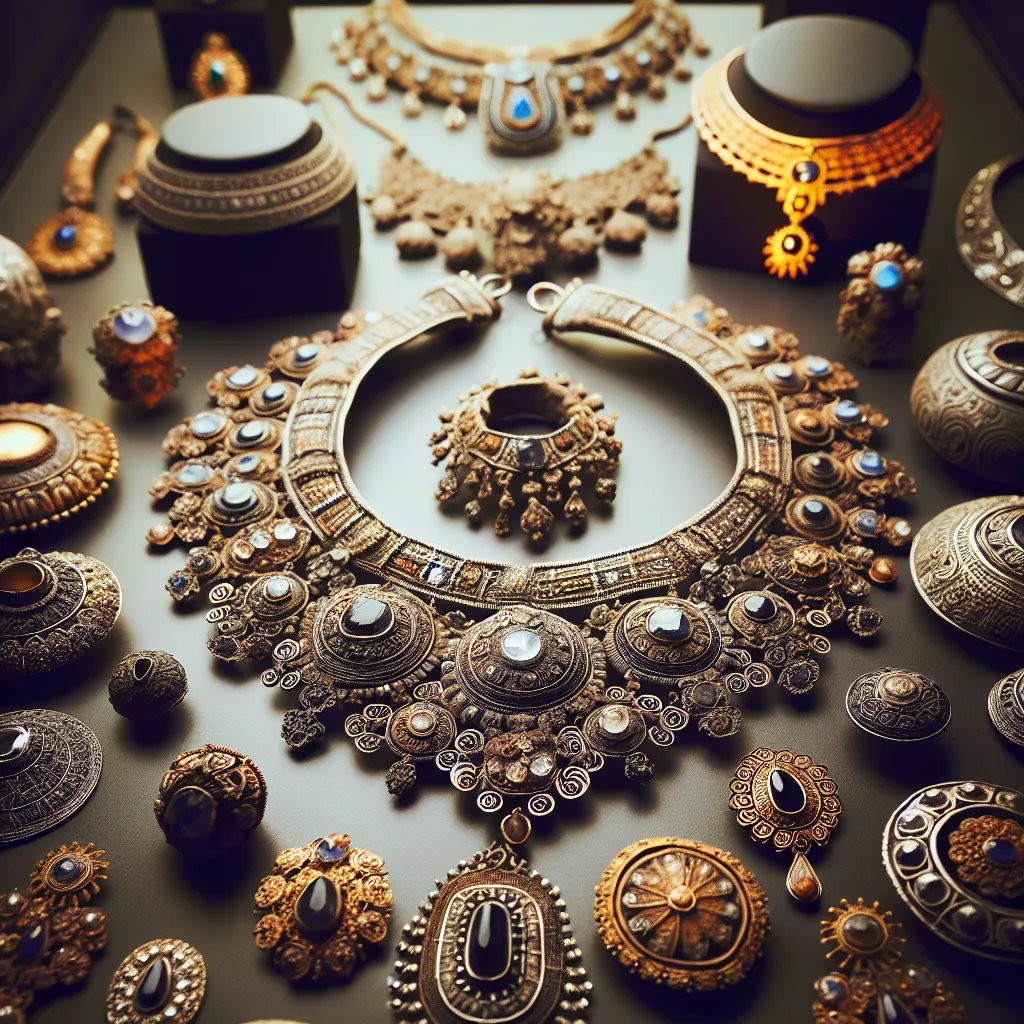The Evolution of Ornamental Art
The evolution of ornamental art is a fascinating journey through the history of human creativity and cultural development. Ornamental art has been an integral part of human expression since prehistoric times, with early examples found in cave paintings, pottery, and jewelry. From ancient civilizations such as the Egyptians, Greeks, and Romans to the intricate designs of the Middle Ages and the ornate patterns of the Renaissance, the history of ornamentation reflects the aesthetic, cultural, and technological advancements of each era.
During the Middle Ages, ornamental art flourished in the form of illuminated manuscripts, stained glass windows, and intricate architectural details found in cathedrals and castles. The Renaissance period saw a revival of classical motifs and a celebration of symmetry, proportion, and perspective in ornamental design. With the advent of the Industrial Revolution, ornamental art adapted to the changing modes of production, leading to the mass production of decorative objects and the rise of new artistic movements such as Art Nouveau and Art Deco.
In the modern era, the evolution of ornamental art has been shaped by a myriad of influences, from the organic forms of the Art Nouveau movement to the geometric patterns of the Bauhaus school. Today, ornamental art continues to thrive in various forms, from ornate architectural details to contemporary decorative arts and digital ornamentation. The evolution of ornamental art reflects the ongoing innovation and reinterpretation of cultural motifs and design principles, making it a timeless and enduring aspect of human expression.
Cultural Significance of Ornaments Through History
Ornaments have played a significant role in the cultural history of civilizations around the world. From ancient times to the modern era, ornaments have held cultural significance, representing traditions, beliefs, and societal roles. The history of ornaments can be traced back to early human civilizations, where they were used not just for adornment, but also as symbols of status, cultural identity, and spirituality.
In many cultures, ornaments were crafted using materials that held specific meaning, such as gold, silver, or precious gemstones. These materials were often believed to have mystical or spiritual properties, and their use in ornaments reflected the cultural beliefs and value systems of the societies that created them. For example, in ancient Egypt, ornaments such as amulets and pendants were intricately designed with symbols and precious stones to provide protection and to signify the wearer’s social status.
Throughout history, ornaments have been used to convey messages about societal roles, such as marriage or religious affiliation. For instance, in Hindu culture, the mangalsutra, a black and gold beaded necklace, is a symbol of marriage and is worn by married women as a mark of their marital status. Similarly, religious ornaments like crosses, rosary beads, or the hijab hold deep cultural and spiritual significance in Christianity and Islam, respectively.
Ornaments also served as a means of cultural expression and identity. In Native American cultures, jewelry made from materials like turquoise, coral, and silver not only held spiritual significance but also represented tribal affiliations and traditions. The intricate designs and motifs found in these ornaments were often reflective of nature, mythology, and spiritual beliefs unique to each tribe.
Today, ornaments continue to hold cultural significance, with many individuals preserving and wearing traditional ornaments as a way to honor their heritage and keep their cultural practices alive. The use of ornaments to mark cultural rites of passage, celebrations, and religious ceremonies remains a powerful and enduring tradition in many societies, underscoring the timeless significance of ornaments in the tapestry of human cultural history.
Techniques and Materials Used in Ancient Ornaments
Exploring the history of ornaments reveals a fascinating array of techniques and materials used in ancient times to create decorative pieces. The craftsmanship involved in producing these ornaments reflects the ingenuity and creativity of ancient civilizations. One of the earliest techniques used in crafting ornaments is the art of filigree, which dates back to ancient Mesopotamia and involves delicate wirework to create intricate designs. Metals such as gold, silver, and copper were commonly used in filigree work, showcasing the advancements in metalworking achieved by these early societies.
Ancient ornaments also frequently featured the use of gemstones and beads, which were often meticulously carved or polished to enhance their beauty. Materials such as jade, lapis lazuli, and carnelian were highly prized and incorporated into ornaments, symbolizing wealth and status. In addition to metals and gemstones, natural materials like shells, bone, and wood were utilized in ornamentation, showcasing the diverse resources that ancient artisans had at their disposal.
The techniques and materials used in ancient ornaments varied across different cultures, with each civilization contributing unique styles and designs. Whether it was the intricate metalwork of the Etruscans or the elaborate beadwork of the ancient Egyptians, the history of ornaments serves as a testament to the artistry and skill of our ancestors.
Influential Ornaments in Different Civilizations
Exploring the history of ornaments reveals the diverse and influential role they have played in different civilizations throughout time. Ornaments have been used as a form of expression, symbolism, and cultural identity across various cultures. In ancient Egypt, ornaments such as amulets and jewelry were not only decorative but also held religious and spiritual significance. They were believed to offer protection and good fortune to the wearer, reflecting the deep connection between adornment and belief systems.
In the Roman Empire, intricate ornaments crafted from precious metals and gemstones were a symbol of wealth and status. These ornate pieces adorned both men and women, serving as a display of power and social standing. The craftsmanship and opulence of Roman ornaments have left a lasting impact on the history of jewelry design and continue to inspire contemporary artistic creations.
Meanwhile, in ancient China, ornaments were valued for their intricate designs and symbolic meanings. Jade ornaments, in particular, were highly esteemed and were often associated with immortality and spirituality. The significance of ornaments in Chinese culture extended beyond mere decoration, as they were deeply intertwined with philosophical and religious beliefs.
Throughout history, ornaments have been more than just decorative accessories; they have served as a reflection of cultural values, traditions, and beliefs. Their influence can be seen in the art, fashion, and symbolism of diverse civilizations, leaving an indelible mark on the human story.

